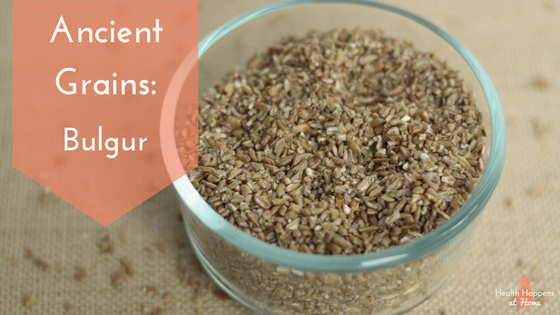Ancient grain summary of posts including recipes links!
Summing Up Sorghum
Summing up the ancient grain sorghum.
The Basics on Buckwheat
Get the basics on buckwheat!
Ancient Grains: Freekeh
Facts on Freekeh are here and the series on ancient grains continues.
Ancient Grains: Bulgur
Get some facts on the ancient grain bulgur. Plus my favorite recipe using bulgur!
Ancient Grains: Teff
Get the scoop on the ancient grain Teff.
Ancient Grains: Kamut
Learn about the ancient grain Kamut.
Ancient Grains: Millet
Get the scoop on millet including how to prepare it.
Ancient Grains: Spelt
Exploring ancient grains: learn more about spelt and baking with spelt flour. Read now or pin for later. - Health Happens at Home
Ancient Grains: Farro
Facts on Farro:
- Farro is usually farro medio (emmer wheat). For reference, durum wheat is the variety used to make most store bought pasta.
- Farro is most often sold semi-pearled to reduce cooking time. This processing removes some nutrients and fiber.
- Since farro is a variety of wheat, it does contain gluten and is not safe for those with Celiac's disease. Although it does have less gluten than other varieties of modern wheat and may be easier to digest.
- Farro has a chewy texture and a mild, nutty flavor so it makes a good alternative to rice and quinoa.
- Farro also makes a great risotto. It can be added to salads or stews and can be used as a breakfast porridge instead of oatmeal.
- Farro is more common in Italy.
- Farro is higher in protein and fiber than modern wheat varieties
- Farro is a good source of iron, magnesium, zinc, and B vitamins
To prepare farro:
(cooking times may vary based on whether the farro is whole grain, pearled or semi-pearled).
1. Rinse farro in mesh strainer.
2. Combine one part farro to 2.5 parts water or broth (eg. 1 cup farro and 2.5 cups water). Bring mixture to a boil.
3. Reduce heat to a simmer for 20 - 40 minutes (longer cooking times are necessary for whole grain and semi-pearled) until liquid is absorbed and desired tenderness is reached.
4. Fluff and serve.
For more on Farro check out these sources/resources:
http://www.drweil.com/diet-nutrition/cooking-cookware/cooking-with-grains-farro/
https://draxe.com/farro/
Ancient Grains: Unlock the Powerful Potential of Ancient Grains and Transform Your Diet and Health Today by Jessica Campbell
Don't forget that health happens at home,
Erin Marie
Content in this post was first published in the Nutrition Nibbles Monthly Newsletter. Subscribe below to be in the know.






















Ancient grain summary of posts including recipes links!